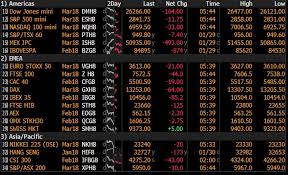World stocks and oil try to scrabble higher after plunge

LONDON (Reuters) – Global equity and crude oil markets attempted on Wednesday to claw their way out of a three-day long plunge that saw investors seek out the safety of bonds amid mounting pessimism over world growth.
Oil’s spectacular fall – down almost 10 percent since last Thursday – and world stocks’ plunge to 19-month lows have spurred speculation the U.S. Federal Reserve might be done with tightening after its policy meeting later in the day.
While Brent crude inched up 0.5 percent to $ 56.5 a barrel after plunging 6 percent overnight, its 35 percent fall since October is sending a disinflationary pulse through the world just as trade and economic activity are cooling.
The latest jolt on the growth front came from Japan which said its export growth slowed to a crawl in November, an ominous signal for the trade-focused economy.
And on Tuesday, logistics and delivery firm FedEx, considered a bellwether for the world economy, slashed its 2019 forecasts, noting “ongoing deceleration” in global growth.
European shares rose 0.3 percent and MSCI’s global equity index firmed a touch, though it has fallen 6 percent since the start of this month, given the fragile nature of the Sino-U.S. tariff truce and signs that company earnings worldwide are slowing.
While equity futures signal a stronger opening on Wall Street, U.S. stocks are set for their worst December since 1931, the depths of the Great Depression. tmsnrt.rs/2A3z5ML
“It’s a confluence of several important factors: the market is adjusting its outlook on growth and there is a consensus we will see a slowdown. More importantly, the market is adjusting to the idea this will translate into lower earnings growth,” said Norman Villamin, chief investment officer for private banking at Union Bancaire Privee in Zurich.
“It’s being complicated by the tightening liquidity situation with the Fed expected to move today and the ECB having signalled the end of its (stimulus)”.
Futures are sticking with a two-in-three chance of a rate rise on Wednesday and Villamin expects the Fed to move twice in 2019. That’s a more hawkish call than the broader market which is pricing less than one rise in 2019, down from three not long back.
The expectations of a Fed pause and the equity selloff sent 10-year Treasury yields to the lowest since August at 2.799 percent – down 20 basis points in December – while two-year yields touched a three-month trough of 2.629 percent, sliding from November’s 2.977 percent peak.
Yields in Japan and Australia also reached multi-month lows.
Reasons for the bond rally were easy to find. Bank of America Merrill Lynch’s closely watched monthly survey found more than half of its participants now flagging a global economic slowdown next year. It also showed the third biggest decline in inflation expectations on record.
The poll also revealed the largest ever one-month rotation into fixed-income assets, their gains coming at the expense of equities.
The steep drop in Treasury yields undermined one of the U.S. dollar’s major props and pulled its index back 0.3 percent to 96.8, from a recent top of 97.711.
Against the yen, the dollar fell 0.15 percent to 112.37 yen, while the euro nudged up to $ 1.1383 from a $ 1.1266 low.
Villamin of UBP said that while uncertainty had grown about the Fed’s rate rise path, other currencies from the yen to the euro still lacked interest rate support.
“Why the dollar won’t be too weak is that the alternatives are not attractive,” he said. “The only real attractive currency out there is the dollar … we think dollar strength will stay another 3-6 months.”
U.S. futures pointed to a firmer Wall Street opening.
The bright spot on world markets is Italy where bond yields continued their fall after Rome struck a deal with the EU Commission over its contentious 2019 budget, signalling an end to weeks of wrangling.
The Italian/German 10-year bond yield gap – a measure of Italian risk – narrowed to around 255 bps, the tightest since late September. That spread had been over 300 bps as recently as end-November.
“Everyone was expecting an agreement to be reached, but many people were expecting this to come in Q1 or Q2 next year,” said Commerzbank rates strategist Michael Leister.
“With risk sentiment stabilising this morning, it looks like the momentum can increase in Italian bonds.”

